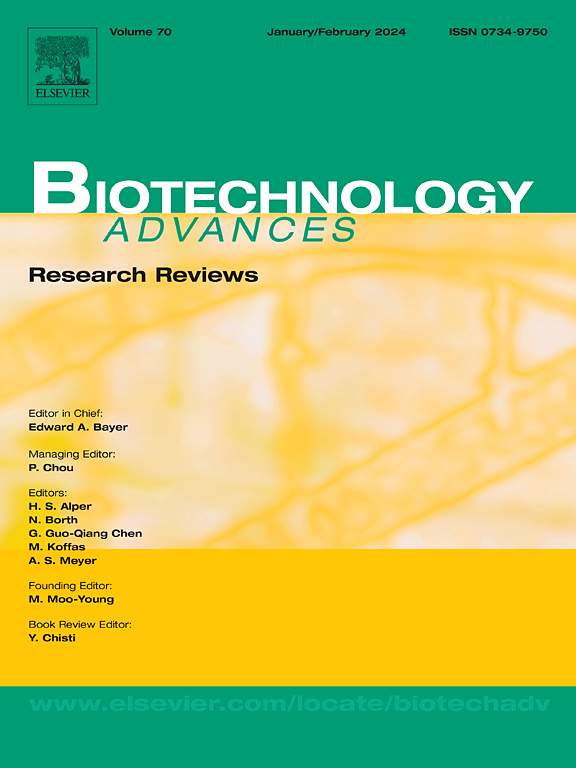目前化学和生物串联塑料升级再循环技术的进展情况
IF 12.1
1区 工程技术
Q1 BIOTECHNOLOGY & APPLIED MICROBIOLOGY
引用次数: 0
摘要
每年都有数百万吨塑料被生产出来,用于包装、建筑和纺织等领域。虽然塑料的实用性和便利性毋庸置疑,但其对环境的影响以及运输过程中的浪费和污染问题却日益引起人们的关注。然而,由于原生塑料易于生产且成本低廉,迄今为止,传统的塑料回收在经济上并不具有吸引力。塑料废弃物中常见的污染物和回收工艺本身的缺陷通常意味着回收的塑料产品在某些情况下质量相对较低。典型的回收操作成本高、能耗大,也降低了其经济效益。近年来,对经过化学处理的塑料废弃物进行生物升级再循环已成为替代传统塑料回收利用的一种很有前途的方法。与回收不同的是,生物升级再循环利用相对温和的工艺条件,以经济的方式将预处理过的塑料废弃物转化为高附加值产品。在本综述中,我们首先简要介绍了传统塑料回收的一般方法和局限性。然后,我们回顾了针对不同塑料(包括聚对苯二甲酸乙二酯、聚氨酯、聚酰胺、聚碳酸酯、聚乙烯、聚丙烯、聚苯乙烯和聚氯乙烯)的化学/生物混合升级再循环方法的最新进展。对于每种塑料,我们都总结了使塑料具有生物可利用性的预处理方法,以及降解或将处理后的塑料废物转化为高附加值产品的微生物底盘。我们还讨论了主要塑料升级再循环工艺的局限性及其生物升级再循环的潜力。本文章由计算机程序翻译,如有差异,请以英文原文为准。
The current progress of tandem chemical and biological plastic upcycling
Each year, millions of tons of plastics are produced for use in such applications as packaging, construction, and textiles. While plastic is undeniably useful and convenient, its environmental fate and transport have raised growing concerns about waste and pollution. However, the ease and low cost of producing virgin plastic have so far made conventional plastic recycling economically unattractive. Common contaminants in plastic waste and shortcomings of the recycling processes themselves typically mean that recycled plastic products are of relatively low quality in some cases. The high cost and high energy requirements of typical recycling operations also reduce their economic benefits. In recent years, the bio-upcycling of chemically treated plastic waste has emerged as a promising alternative to conventional plastic recycling. Unlike recycling, bio-upcycling uses relatively mild process conditions to economically transform pretreated plastic waste into value-added products. In this review, we first provide a précis of the general methodology and limits of conventional plastic recycling. Then, we review recent advances in hybrid chemical/biological upcycling methods for different plastics, including polyethylene terephthalate, polyurethane, polyamide, polycarbonate, polyethylene, polypropylene, polystyrene, and polyvinyl chloride. For each kind of plastic, we summarize both the pretreatment methods for making the plastic bio-available and the microbial chassis for degrading or converting the treated plastic waste to value-added products. We also discuss both the limitations of upcycling processes for major plastics and their potential for bio-upcycling.
求助全文
通过发布文献求助,成功后即可免费获取论文全文。
去求助
来源期刊

Biotechnology advances
工程技术-生物工程与应用微生物
CiteScore
25.50
自引率
2.50%
发文量
167
审稿时长
37 days
期刊介绍:
Biotechnology Advances is a comprehensive review journal that covers all aspects of the multidisciplinary field of biotechnology. The journal focuses on biotechnology principles and their applications in various industries, agriculture, medicine, environmental concerns, and regulatory issues. It publishes authoritative articles that highlight current developments and future trends in the field of biotechnology. The journal invites submissions of manuscripts that are relevant and appropriate. It targets a wide audience, including scientists, engineers, students, instructors, researchers, practitioners, managers, governments, and other stakeholders in the field. Additionally, special issues are published based on selected presentations from recent relevant conferences in collaboration with the organizations hosting those conferences.
 求助内容:
求助内容: 应助结果提醒方式:
应助结果提醒方式:


